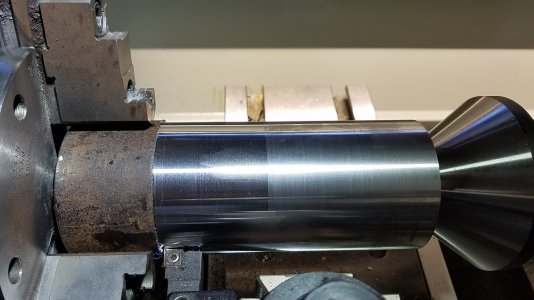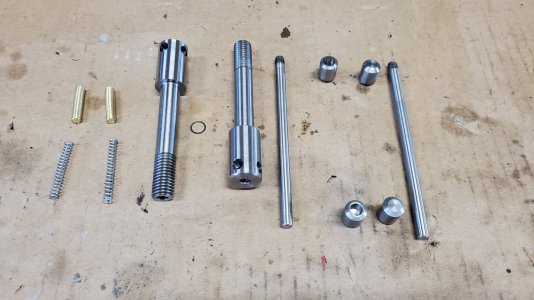- Joined
- Jun 12, 2014
- Messages
- 4,823
You are getting flex/movement and chatter, and it is independent of cutting or threading. When you turned down the center, you should be getting a clean shiny cut. As mentioned 4140 needs a deeper cut and a higher feed when turning, otherwise it will look ragged. Check the insert height. I will also reiterate that if you are turning down stock that small or threading, anything over 1" would need to be supported (rule of thumb is 3-4X the diameter, but on small stuff it will just flex and chatter. I would try threading 1" stock and see if you have the same issue. Below is larger diameter 4140HR and the first half the feed was 0.004"/R and then I doubled it and you can see the finish change. I also do not agree that you need as high as SFM, I usually use 50% of what is indicated on the insert box on my 1T lathe and do just fine. I would first work out getting a good finish on 4140/metal just turning it down, and see if you can get a decent finish, then work on the threading.

Small diameter turning and threading with O1, I do support the longer threading with a live center. I use a 5C collet for this type of work, as there is too much movement of the rod with a 3J when doing small diameter work.


Small diameter turning and threading with O1, I do support the longer threading with a live center. I use a 5C collet for this type of work, as there is too much movement of the rod with a 3J when doing small diameter work.




